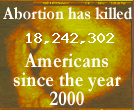 Photo 2: Red-winged blackbird (Agelaius phoeniceus)
Photo 2: Red-winged blackbird (Agelaius phoeniceus)
We have two bird feeders just outside our school room windows. And we have one feeder hanging from the Holly tree in the back of our house, and another hanging from the giant Hackberry tree in the front yard. We love watching the birds ! Throughout this past year, on rainy or cold days when the weather was not nice enough for nature walks, we have watched our bird feeders for our Nature Studies. Of course, we can also all say that we have spent a fair amount of time watching the feeders "just because" too.
Lately, we have seen more than a few "new" birds visiting our bird feeders ... birds we have not seen since late last summer or late last fall. Cardinals, Blue Jays, Robins, and more. And in the last week or two, we have been seeing plenty of Blue Birds (they are actually building nests in 3 of our birdhouses - HOORAY !!), Robins, Swallows, Chickadees, Titmouses, and the list goes on and on ....
But this morning we spied two "new" friends taking turns perching on the feeder ... friends whom we had not seen on our feeders before (but we had seen each of them down by the pond last summer) .... one is medium sized, mostly dark colored, with a very bright striking "swoosh" of red and yellow on the top part of the wings .... and the other is a dark brown-black all over with a brownish head that is almost chocolate colored.
So .... out came the Identification Guides and the Field Books ...
The one with the red and yellow "swoosh" on it's wing is a:
Red-winged blackbird (Agelaius phoeniceus) .
http://www.birds.cornell.edu/AllAboutBirds/BirdGuide/Red-winged_Blackbird.html
http://www.birds.cornell.edu/AllAboutBirds/BirdGuide/Red-winged_Blackbird.html
And the dark colored one with the chocoate colored head is the infamous cowbird. This species we spotted is the Brown-headed Cowbird. (Molothrus ater) There were several of these fellas hanging out with several redwinged blackbirds that were in the yard today eating lots of birdseed. We saw only male cowbirds, we think. My guess is the females are around here somewhere dropping thier eggs in the nests of the other birds. The lady cowbirds have other birds raise their young - it is because of this they are considered a parasitic species of bird. This is difficult on the smaller birds and usually they end up sacrificing some of their own. Because cowbirds are a large bird so the smaller (mother) birds work very hard to feed the larger babies sometimes to the neglect of their own.
Brown-headed Cowbird. (Molothrus ater)










2 comments:
We love watching our bird feeders during school, too, and have to be careful or school won't take place. :-) We haven't seen any red-winged blackbirds at our house, but we've seen some while birding and they are one of my favorite birds! And, how wonderful that bluebirds are going to nest in your bird houses.
We only have one feeder and have only seen 1-2 species (haven't identified them yet). We need to put out more and plant more foliage to encourage them to visit.
Post a Comment